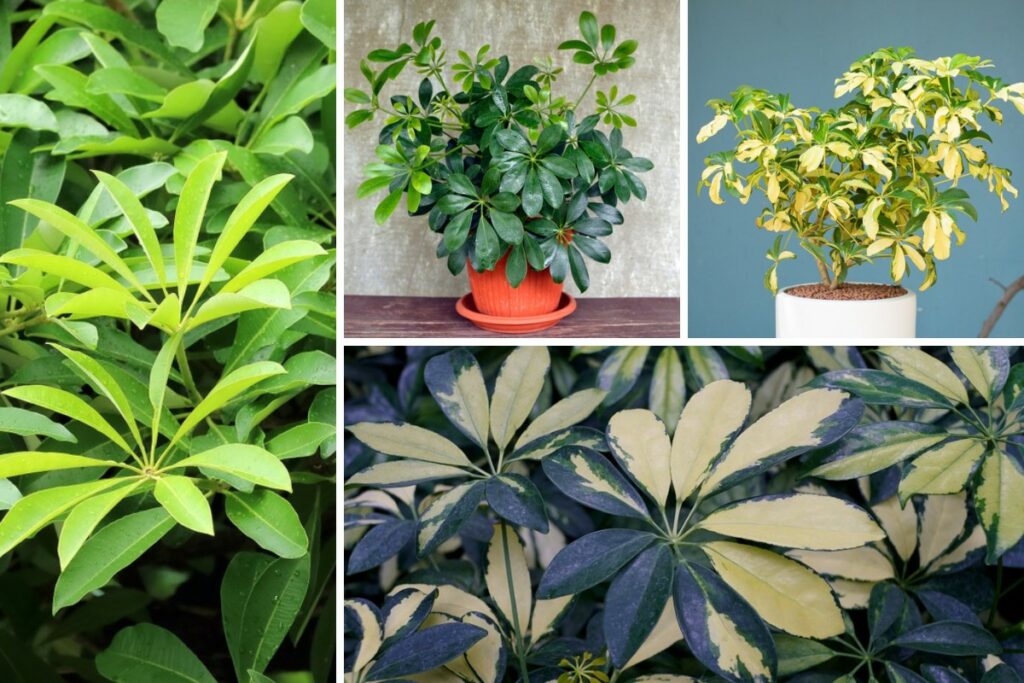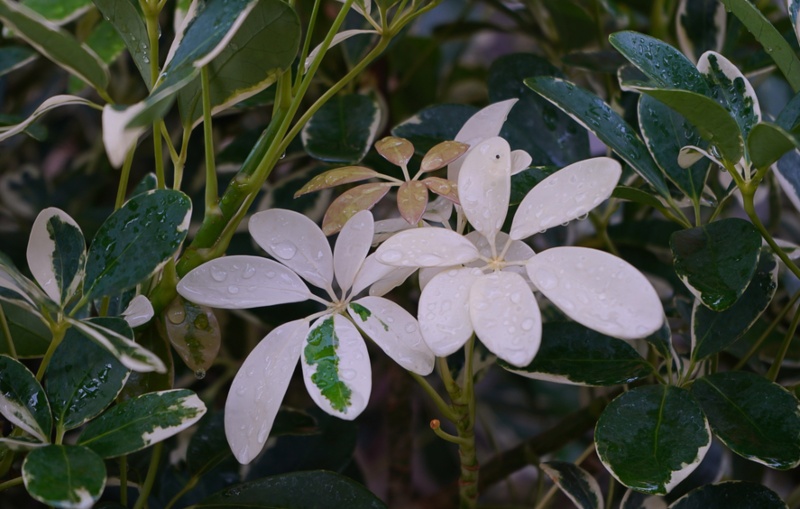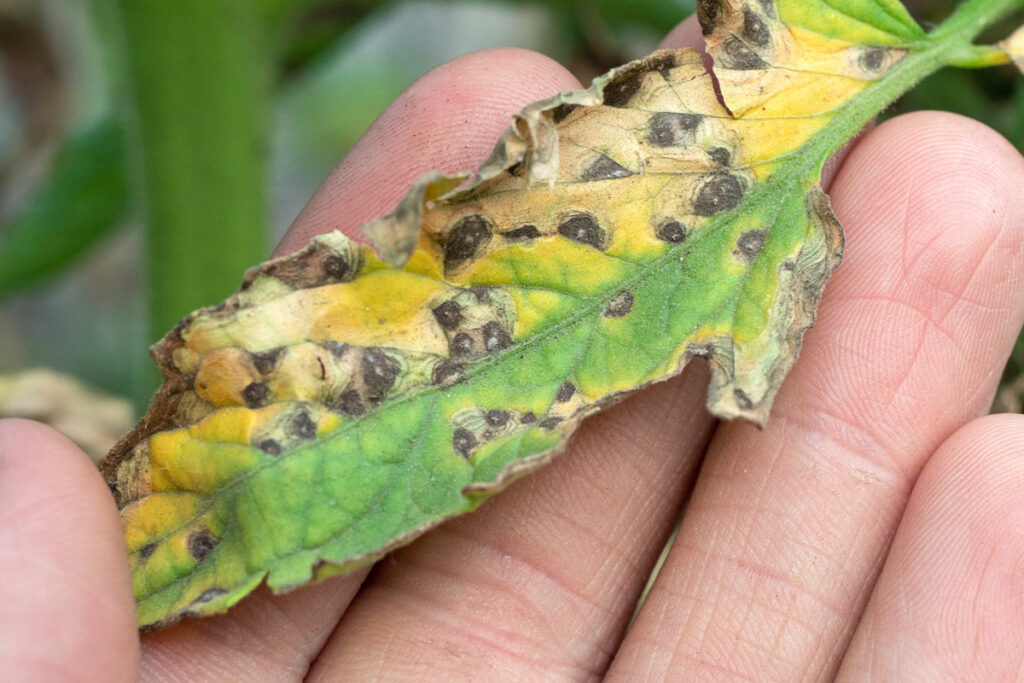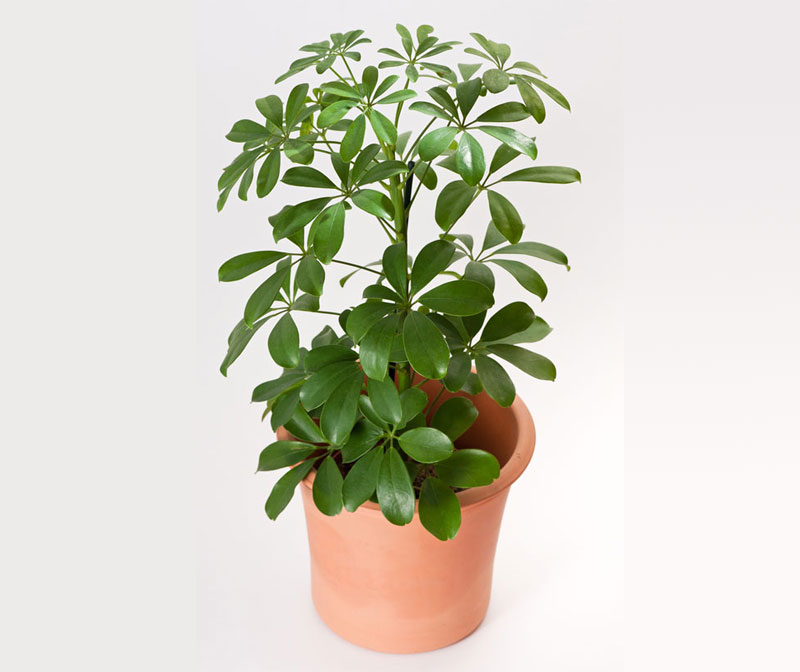
One of my favorite plants to grow in my home is the umbrella plant (Schefflera or Heptapleurum). It is a rather large plant that can grow to heights of up to six feet, and the foliage on the plant grows in a unique eight-spoke style that looks like an umbrella, hence the name.
Umbrella plants do not bloom, but you can find varieties that feature unique leaf markings. These plants are easy to care for, but caring for the plant incorrectly can damage it. This guide is designed to help you learn how to maintain beautiful, lush umbrella plants you can be proud of.
| Origin: | Taiwan |
| Botanical Name: | Schefflera arboricola |
| Plant Type: | Broadleaf evergreen |
| Light: | Bright, Indirect Light |
| Watering: | Medium |
| USDA Zone: | 10-12 |
| Height: | 4-6 feet; Up to 25 feet (outdoors) |
| Maintenance: | Low |
| Toxic to Pets: | Toxic to Dogs, Toxic to Cats (source) |
How to Plant and Care for Umbrella Plants
With proper care, this plant can quickly become one of the tallest plants in your home. It grows extremely fast to have a very tall plant within a single growing season. Let’s look at some tips to help you care for your umbrella plant.
Watering Umbrella Plants
Umbrella plants grow best in moist soil, so water them often. Overwatering the plant can cause the leaves to turn yellow while underwatering it will cause the leaves to droop. The best way to ensure you provide the plant with the appropriate amount of water is to wait until the top of the soil is dry before you water the plant again.
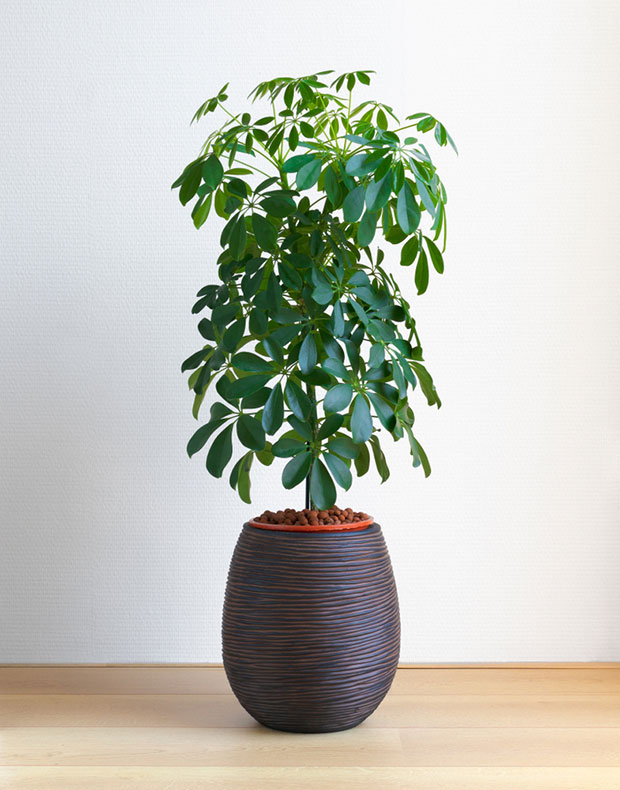
Feeding Umbrella Plants
Since these plants grow a lot each season, they need a lot of fuel to sustain their growth. Feeding it every two to three weeks with regular liquid fertilizer would be best. Once the plant reaches the height you want it to be, you can stop fertilizing it as often. Fertilizing the plant once or twice a year is adequate.
Light Requirements
Umbrella plants require quite a bit of light, but they should never be positioned in direct sunlight. A few hours a day is possible, but too much direct sunlight will cause the leaves to burn. If the plant seems to be growing more favorably on one side than the other, turn it so that the other side of the plant can get more sunlight. If your umbrella plant receives less than the optimal amount of sunlight, it often accommodates its living situation. The plant may slow its growth, but it will usually remain healthy.
Temperature and Humidity
The temperature of your home is essential for Umbrella plants because temperatures that are too cold will cause the leaves to fall off the plant. Keep temperatures between 65 and 75 degrees Fahrenheit for the best foliage growth. The all-green leaf variations typically prefer the cooler end of that range, while the types that have more decorative leaves prefer slightly warmer temperatures.
Umbrella plants do not require a lot of humidity, so typically, the humidity level that is already present in your home is acceptable. If the air is excessively dry, then try misting the leaves occasionally to provide a bit of artificial humidity. This is also a great way to ensure that dust does not accumulate on the plant leaves. In addition, if you are having a pest problem, raising the humidity level could help solve the issue by deterring the bugs.
Pruning, Repotting, and Propagation
Since these plants grow so fast, you may need to prune the plant to keep the plant the shape and size you desire. Umbrella plants bounce back quickly, so even if you harshly prune away a good bit of the plant, it will grow fuller than it was. This is a great way to get a sluggish plant to become more lush and beautiful.
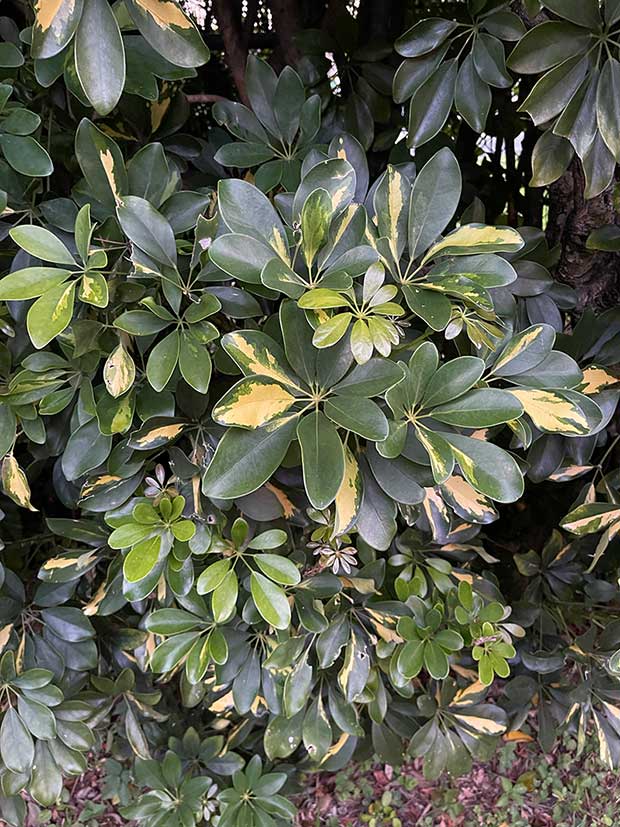
Once an umbrella plant reaches maturity, it must be repotted every three years or so. Once the roots start growing through the drainage holes in the pot, it is time to repot. Make sure to use a relatively large pot because the height of this plant can make it top-heavy, and always repot Umbrella plants during the spring of the year.
Propagation can occur by using cuttings from a mature plant. These cuttings should be at least two inches long to help the new growth take root. Ensure that the tip of the growing plant is not buried in the soil. These plants can also be grown from seeds if you are having difficulty with the cuttings taking root.
Common Problems That Umbrella Plants Have
Though umbrella plants are easy to grow indoors, they can have some issues you may need to overcome. The first issue you must be aware of, especially if you have pets, is that this plant is slightly toxic to dogs and cats. This means that if they ingest the leaves from the plant, they will most likely become ill. Some of the concerns that will affect the growth of the plant are:
• Fungal Leaf Spots – When a plant has this disease, black or dark brown spots appear on the leaves. Eventually, the infected leaves will fall off, and the disease will spread. To prevent this from occurring, removing an infected area before it has the chance to spread is best.
• Bacterial Leaf Spots – If yellow spots are noticed on the leaves of your plant, then it may have a bacterial disease. This is best-taken care of by removing the spotted leaves as soon as they are noticed.
• Root Rot – Root rot can occur when an Umbrella plant receives too much water. Never allow the plant to sit in a pool of water, and if root rot does occur, cut out any infected areas of the roots and repot it with new soil.
• Pests – Spider mites are a common problem with umbrella plants, especially when the air is dry. If you notice webbing on the leaves, wipe them clean and raise the room’s humidity levels to deter the pests from returning.
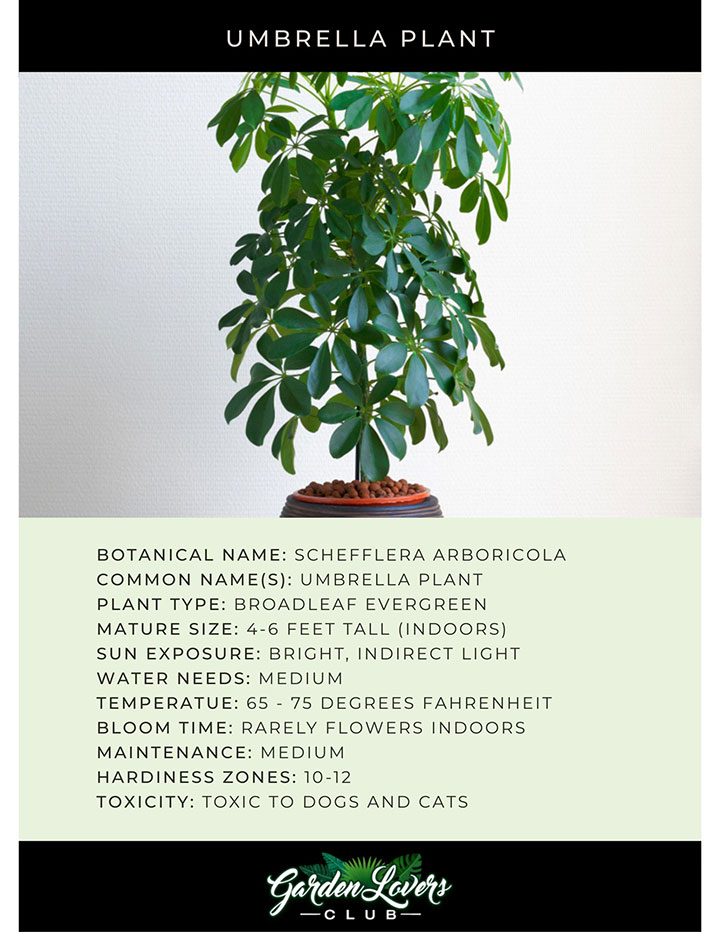
Umbrella plants are small tree-like plants that can add a lot of atmosphere to your home. They make an excellent plant for your home’s entryway, and they can be pruned to accommodate the size and shape you desire. If you are looking for a stunning plant that does not bloom indoors, the umbrella plant is perfect for your home.
Related Articles





